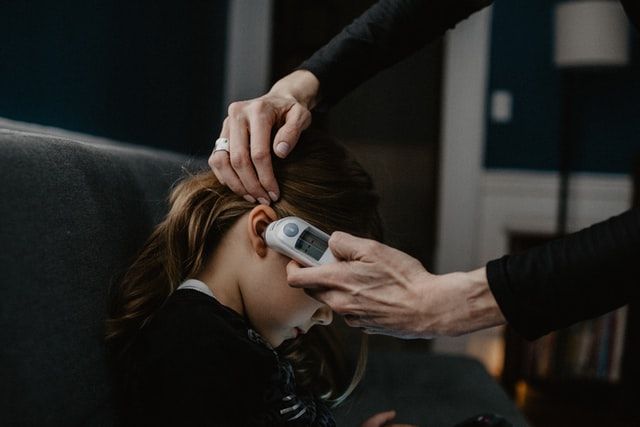
High Rate of Child Hospitalizations from COVID-19
The COVID-19 pandemic is now heading into its third year. For many people, this has become an increasingly scary time to be a kid or a parent. That is mainly because the rate of COVID hospitalizations among children, especially those under five, has risen drastically in the United States.
According to the American Academy of Pediatrics (AAP), the COVID rate among 100,000 children is over 14,000. Although some people believe that healthy children rarely get COVID-19, severe sickness, hospitalization, and death can result. Child hospitalization prevention is essential to reduce the current COVID-related burden on our healthcare system and give other children access to the care they need. For eligible children, vaccination and boosters are the best forms of protection against COVID-19.
Child COVID-19 Hospitalizations Are Soaring
According to the Centers for Disease Control and Prevention (CDC), December 2021 saw COVID hospitalizations rates nine times higher in unvaccinated children between 12 and 17 years old. Records dating back to August 2020 show over 94,000 child hospital admissions for COVID-19. According to the American Academy of Pediatrics, hospitals from 24 states and New York City reported that children accounted for 1.7 percent to 4.4 percent of total hospitalizations.
Low vaccination rates among children, especially those too young to get the shot, are partly responsible for the uptick in child COVID-19 hospitalizations. According to the CDC, as of January 13, 2022, only 54 percent of children ages 12-17 and 18 percent of children 5-11 years old are fully vaccinated. During a COVID-19 briefing update in January, the CDC Director Dr. Rochelle Walensky pointed out that unvaccinated children 12-15 years old are 11 times more likely to be hospitalized for COVID-19 than vaccinated children in the same age range.
Many of these COVID-19 hospitalizations can be attributed to Omicron. This variant often causes upper respiratory (nose, throat) symptoms in very young patients, whose airways are narrow enough to clog significantly from inflammation.
Children who are not vaccinated face other health risks from COVID-19 infection. For instance, Multisystem Inflammatory Syndrome in Children (MIS-C) is a rare but serious condition that might afflict some children who have previously had COVID-19. MIS-C can lead to inflammation of the lungs, brain, and other vital organs. Symptoms include fever and one or more of the following:
- Bloodshot eyes
- Diarrhea
- Lightheadedness or dizziness
- Skin rash
- Stomach pain
- Vomiting
Also, children and teenagers who have had COVID-19 can be 2.5 times more likely to develop diabetes at least 30 days after infection than those with no COVID-19 infection.
Importance of Child Vaccination Against COVID-19
Despite how healthy they might be, children can still contract COVID-19. Prevention through vaccination is the best means of defense. Although the primary vaccines might not completely shield children from Omicron, it reduces the risk of hospitalization and severe illness. Even in cases of infection, sickness in vaccinated children is relatively mild.
According to the CDC, children five years of age and older can get the Pfizer/BioNTech vaccine. Also, Pfizer boosters have been approved for children aged 12-17 at least five months after their primary vaccinations. Studies confirm child vaccine safety and efficacy and that serious complications in children aged 5-11 are rare. Keep in mind that children 12 years old and younger cannot yet get booster shots.
Protecting Children Who Are Vaccine-Ineligible
There is currently no approved child vaccine for individuals younger than five. Pfizer and Moderna are currently conducting trials of vaccines among children aged six months to four years. Pfizer has announced plans to apply for emergency use authorization for this age group in the coming months.
In the meantime, parents and others can engage in various prevention tactics to protect children currently ineligible for vaccination. Children older than two years who are unvaccinated should wear masks in public places and around people they do not live with. Parents should try to encourage their children to wear two surgical masks or at least avoid cloth masks, which are less effective.
Another effective habit is cocooning, which is to have parents, siblings, and other loved ones around the vulnerable child get vaccinated and boosted. They can engage in other behaviors like social distancing when in public.
Finally, these uncertain times call for extra vigilance, particularly looking for signs of COVID-19 infection in your children. A child who becomes seriously sick and needs a doctor’s attention might show signs of dehydration, have trouble breathing, or complain of persistent pain or pressure in their chest. Refusing to drink or having dry diapers are also possible indications of serious illness.
Research and materials for this article were compiled, written, and distributed on behalf of the National Public Health Information Coalition. The views and opinions expressed in this blog are those of the various authors and do not necessarily reflect the official policy or position of the National Public Health Information Coalition or its members.
References

